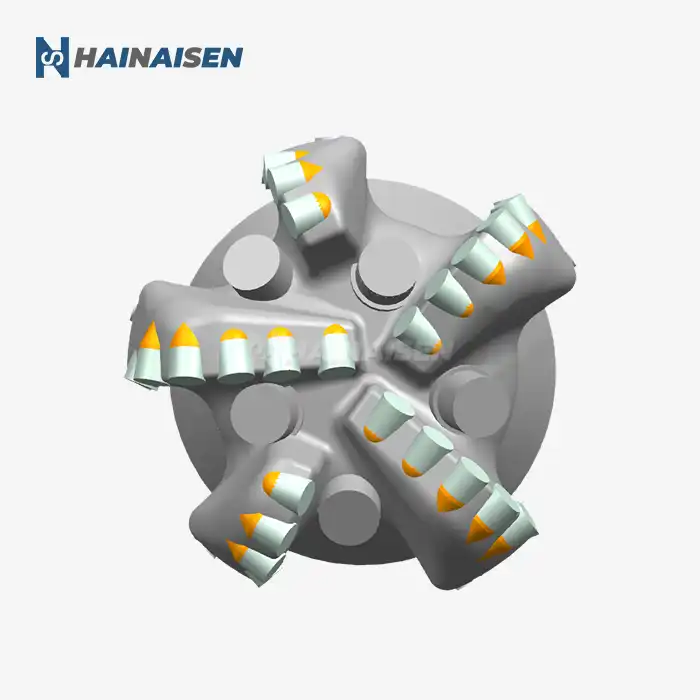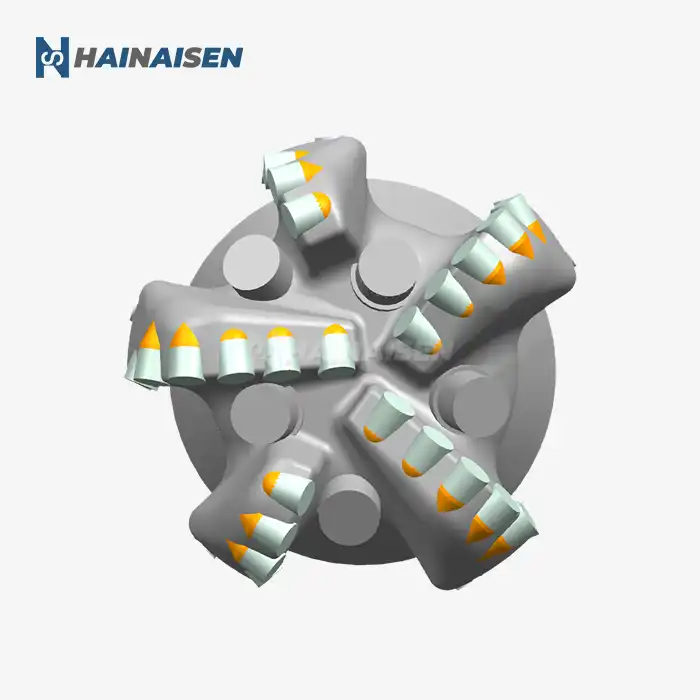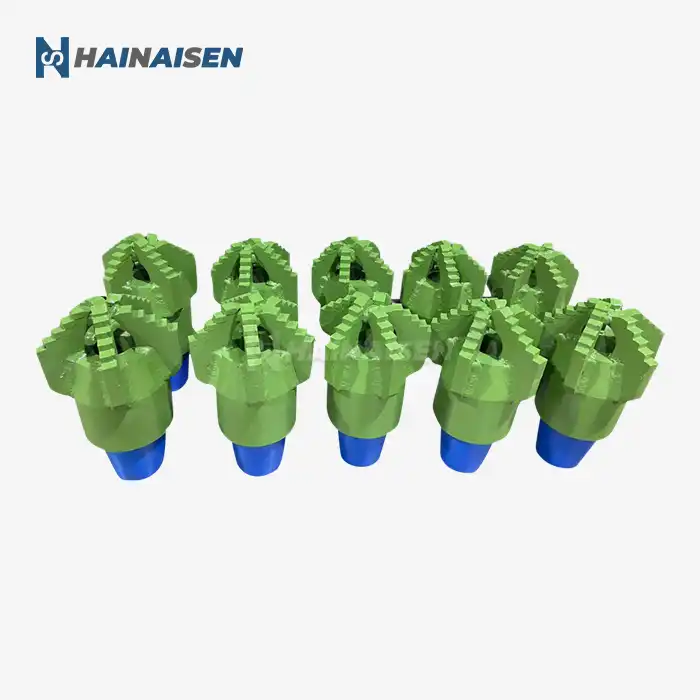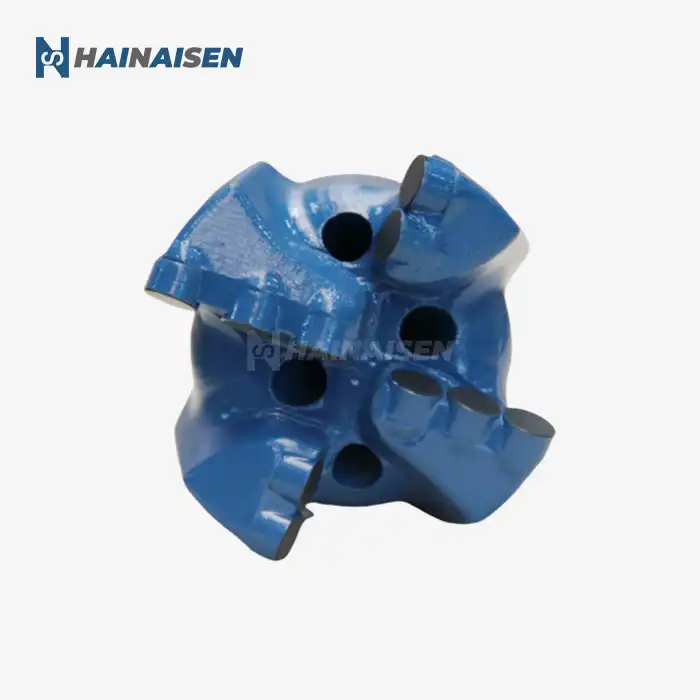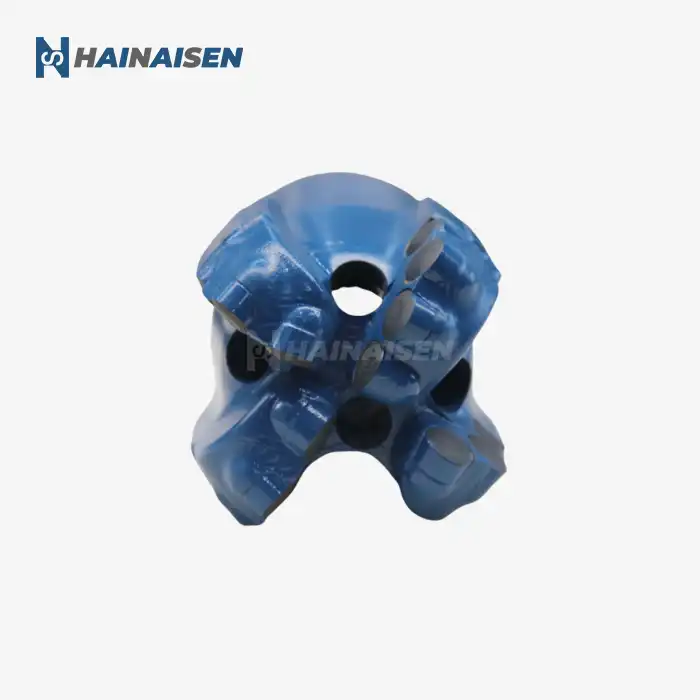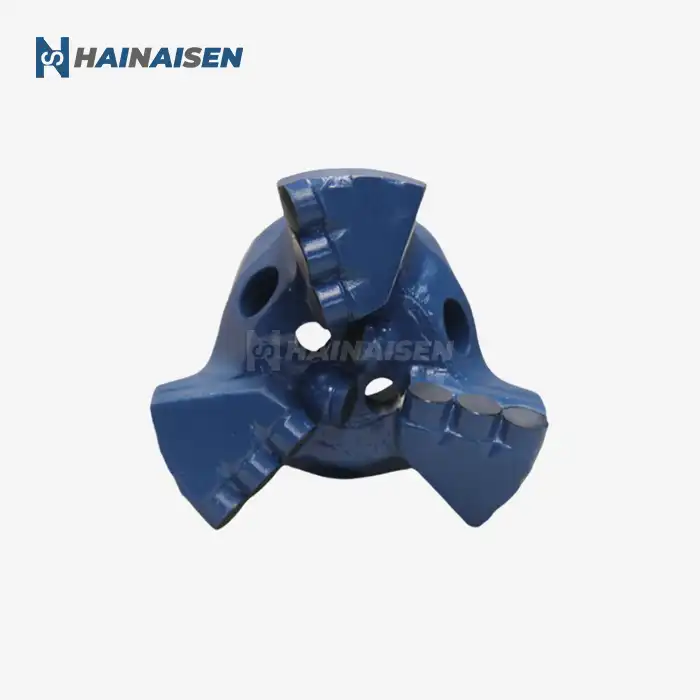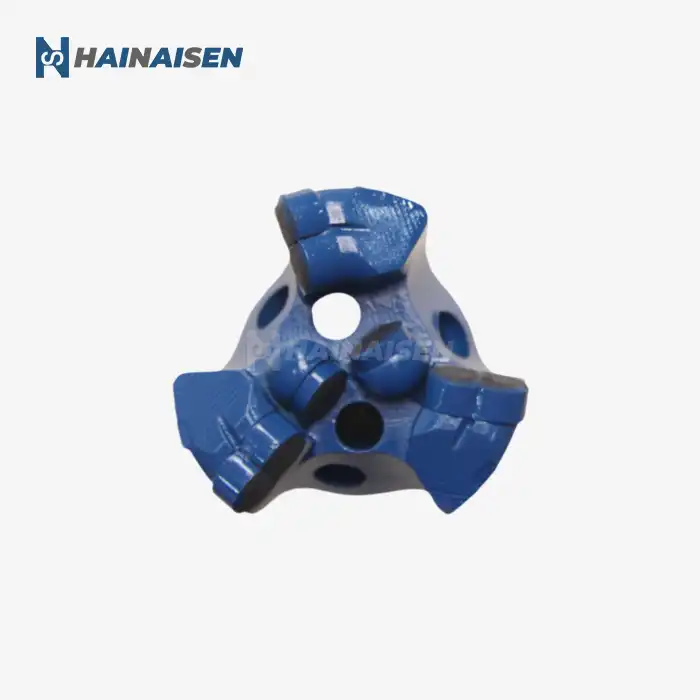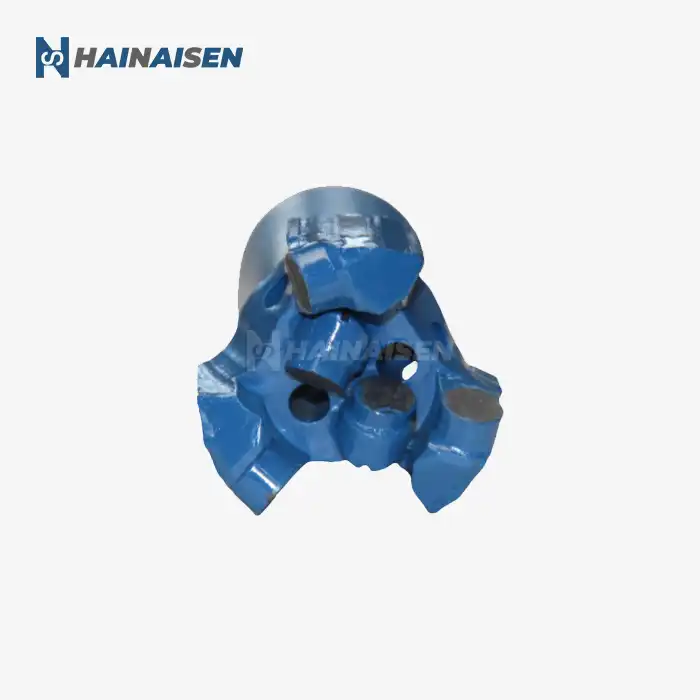Why Use Five Blade Wing Oil Drilling for Hard Rock Formations?
In hard rock formations, precision, durability, and penetration efficiency are crucial. This is exactly where Five Blade Wing Oil Drilling proves to be a game-changer. Engineered for robustness and adaptability, five blade designs enhance structural resilience while maintaining high-speed drilling capacity. The optimized blade count strikes a balance between cutting aggression and thermal stability, making it ideal for complex geological layers. Whether it's shale, granite, or abrasive sandstone, this drill bit configuration maximizes rate of penetration and minimizes downtime. For operators navigating challenging subsurface terrains, Five Blade Wing Oil Drilling is not just a tool—it is a strategic advantage.
What Advantages Do Five Blade Wing Bits Offer in Hard Rock Drilling?

Balanced Cutting Force Distribution
The five-blade configuration ensures even pressure distribution across the bit face, reducing vibrations and improving borehole quality. This structural symmetry enhances bit stability in fractured or interbedded formations, allowing the operator to maintain a steady trajectory without damaging equipment.
Optimal Bit Face Contact
Five Blade Wing Oil Drilling is designed with five strategically placed wings that ensure consistent contact with the rock surface throughout the drilling process. This design improves the scraping and crushing effect, leading to more efficient cutting. As a result, it helps prevent slippage, reduces unnecessary torque, and provides better control when drilling in deviated wells, ultimately enhancing overall drilling performance and efficiency.
Reduced Wear and Tear
Wear resistance is a critical aspect of performance in abrasive formations. The five-blade design works harmoniously with PDC cutter arrangements to optimize cutting structure engagement. High-performance synthetic diamonds extend the operational life of the bit by minimizing cutter damage and thermal degradation.
Improved Hydraulic Flow
The multi-nozzle configuration in five-blade wing bits improves cleaning efficiency at the cutting surface. This design allows for better evacuation of cuttings, preventing clogging and preserving drilling performance over extended runs. Compared to heavier configurations like the seven blade wing oil drilling drill bit, the five-blade version often provides greater efficiency in shallow to mid-depth hard rock wells.
Enhanced Durability and Penetration: Five Blade Wing Bit Benefits
Reinforced with High-Performance PDC Cutters
Our 12.25-inch Five Blade Wing Oil Drilling is designed with five strategically placed wings that ensure consistent contact with the rock surface throughout the drilling process. This design improves the scraping and crushing effect, leading to more efficient cutting. As a result, it helps prevent slippage, reduces unnecessary torque, and provides better control when drilling in deviated wells, ultimately enhancing overall drilling performance and efficiency.
Double-Row Tooth Structure
The double-row tooth structure is a design innovation that enhances the overall structural integrity of the bit while simultaneously increasing its surface contact with the formation. With more contact area, the bit is able to achieve superior fragmentation of hard rock, making it more efficient in breaking down tough formations. This results in improved performance, allowing the bit to maintain a high rate of penetration (ROP) even when drilling through varying lithologies.
Anti-Collision and Reverse Tooth Geometry
One of the standout features of our five-blade wing bit is its anti-collision protection, which safeguards the composite pieces from damage caused by lateral shocks during drilling. This protection also enhances tool face control, ensuring smoother operation. Additionally, the reverse tooth geometry acts as a fail-safe mechanism, effectively preventing drill sticking by facilitating improved backward flow of rock chips, which helps maintain consistent drilling performance even in challenging conditions.
Better Toolface Stability
Bit stability in high-angled and horizontal wells is often a limiting factor in operational efficiency. The geometry of the five-wing design adds intrinsic directional control, enabling smoother navigation through interbedded zones and fewer correctional trips. It's a strategic upgrade compared to the heavier seven blade wing oil drilling drill bit options that can sometimes over-engage the formation.
Optimizing Drilling Efficiency with Five Blade Wing Technology
Lighter Weight, Higher Penetration
Our Five Blade Wing Oil Drilling is carefully engineered for both agility and high performance. The reduced weight minimizes strain on rotary systems, making it more efficient while still delivering sufficient mass to penetrate and break through consolidated formations. Additionally, the 90mm gauge length ensures adequate contact with the formation, providing optimal stability and cutting efficiency, all without compromising maneuverability in narrower boreholes.
Adaptive Cutter Selection
Formation types vary, and so should the design of your drill bit. Our adaptive cutter selection allows operators to choose PDC elements tailored to the specific rock properties they are drilling through, whether it’s brittle quartzite or ductile shale. This customizable approach ensures that the bit is perfectly suited to the target formation, avoiding over-engineering or under-engineering, ultimately reducing costs and enhancing operational efficiency.
Enhanced Borehole Quality
The integration of both passive and active tooth diameter protection ensures a uniform borehole throughout the drilling process. This consistent borehole quality is crucial for successful casing and cementing operations. Additionally, the enhanced wellbore geometry improves the accuracy and reliability of data acquisition during logging, which in turn supports better decision-making and boosts field intelligence for more efficient drilling operations.
Strategic Efficiency
By minimizing non-productive time (NPT) and reducing the frequency of bit trips, five-blade wing bits lead to measurable operational savings. Drilling efficiency isn’t just about speed; it’s about consistency, reduced tool failure, and enhanced data fidelity.
Operators often find that while the seven blade wing oil drilling drill bit may excel in some ultra-deep high-resistance wells, the five-blade alternative offers a better cost-performance ratio in diverse field conditions.
Conclusion
In conclusion, Five Blade Wing Oil Drilling technology offers a well-rounded solution for complex hard rock formations. From balanced force distribution to advanced cutter configurations, it serves as a comprehensive answer to modern drilling challenges. Whether you're operating in fractured shale or ultra-deep granite layers, the five-blade approach promises longer bit life, higher penetration rates, and lower operational costs.
For more information or to inquire about our five-blade and seven-blade drilling solutions, please contact us at hainaisen@hnsdrillbit.com.
References
1. "PDC Bit Design for Improved Performance in Interbedded Formations," Society of Petroleum Engineers.
2."Cutting Structure Optimization for Hard Rock Formations," Journal of Energy Resources Technology.
3. "Field Comparison of Blade Count in PDC Bits," Oil & Gas Journal.
4. "Advancements in Hard Rock Drilling Technologies," International Drilling Conference Proceedings.
5. "Hydraulics and Cleaning Efficiency in Multi-Blade Bits," Petroleum Drilling Review.
6. "Impact Resistance of PDC Cutters in High-Pressure Environments," Drilling Engineering Handbook.



